Cross-Country Skiing Daily Training
The data shown in this blogpost comes from a training session of a Norwegian national-level skier wearing our sensor. The training consisted of 20 short classic uphill intervals (ca. 250m, duration between 1:21 and 1:33), divided into two blocks of 10 intervals with a 10-minute break in between. Every third interval the athlete had to use only double poling, while for the rest of the intervals he was free to choose any sub-technique or combination.
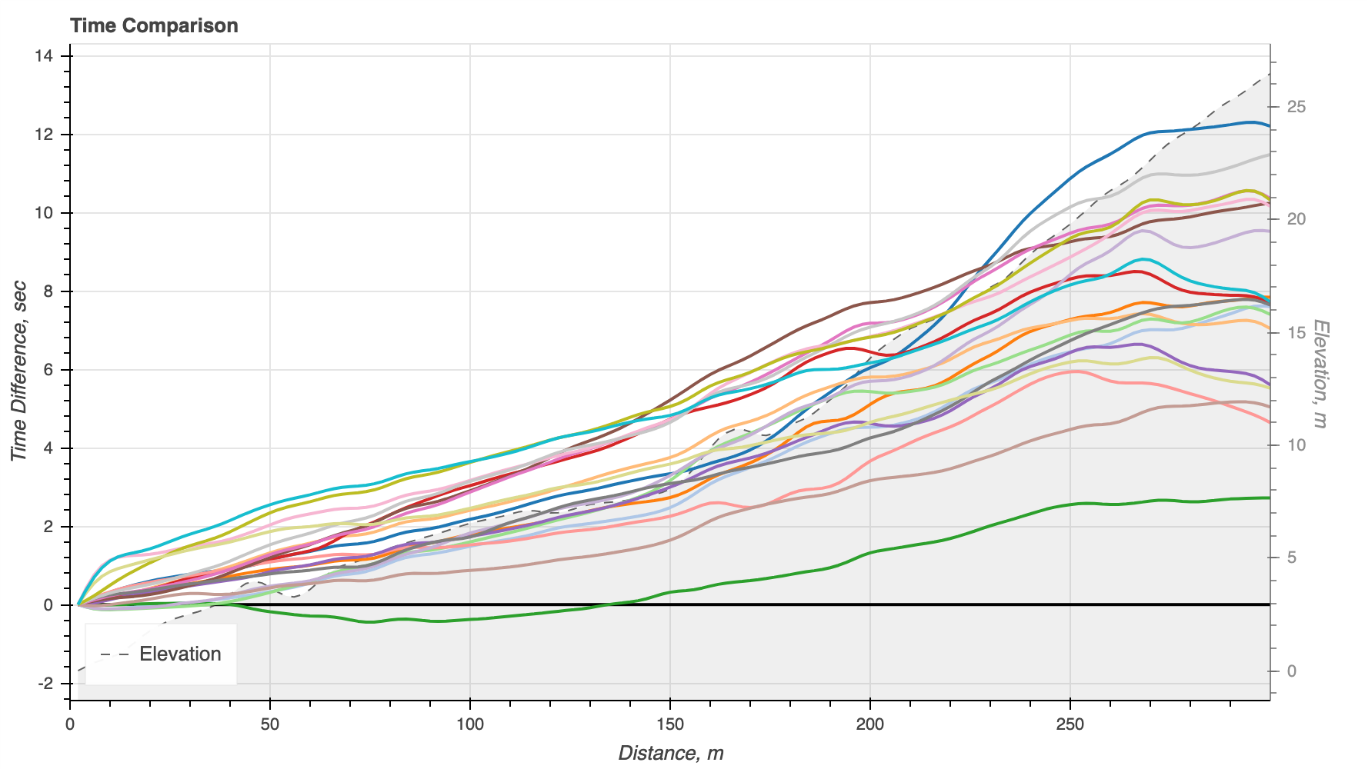
Sub-technique comparison
The comparison between the fastest double poling interval (1:21.03) and two of the fastest free sub-technique intervals (1:26.62 and 1:28.71) reveals some interesting results.
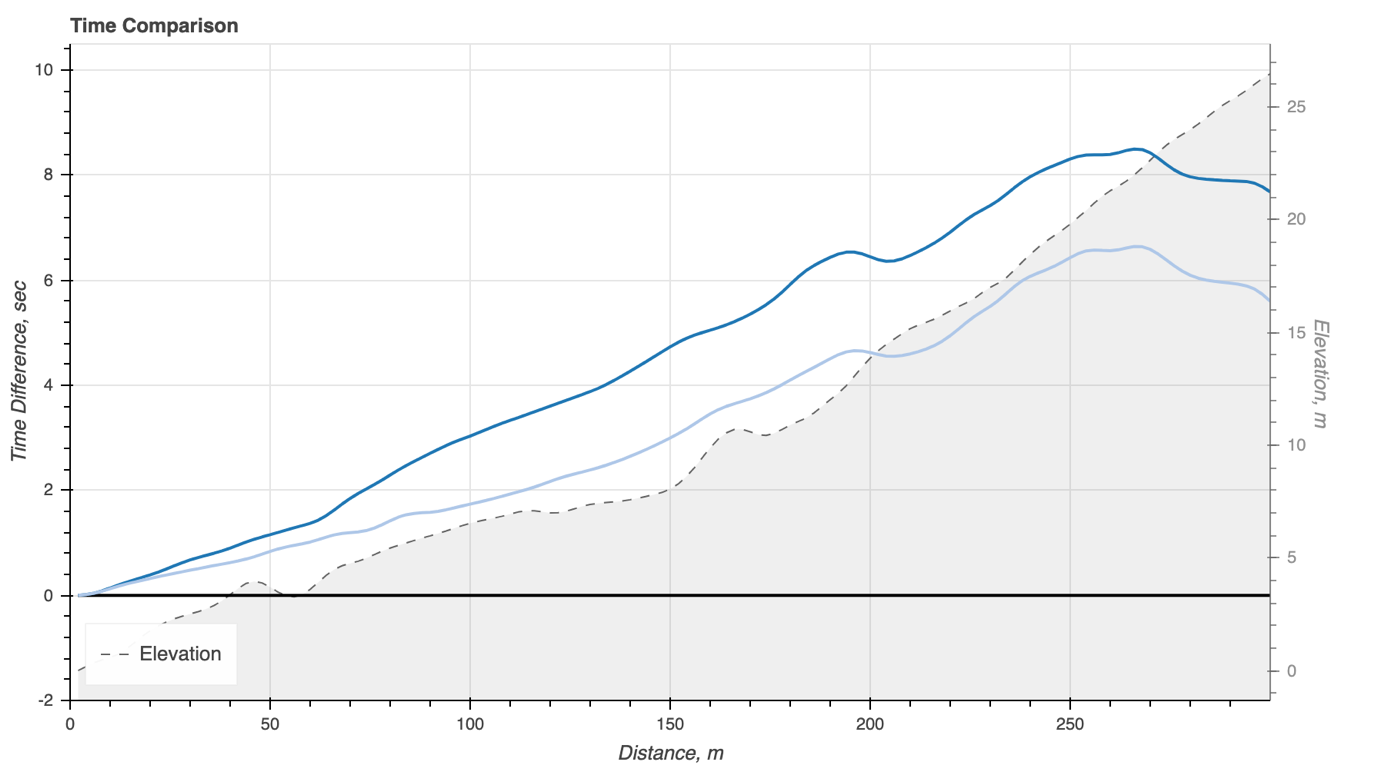
First of all, it indicates that double poling only was faster than the use of a combination of different sub-techniques. The measurements from the athlete's sport watch even showed that he had lower heart rate using only double poling.
The following plots always compare two intervals, bottom to top. The colored background shows the sub-technique used for each interval. The colored and slightly dotted curve that goes diagonally through each figure is the elevation profile of the track while the color denotes the relative speed difference. Red means that the top interval was slower. Green means that the top interval was faster.
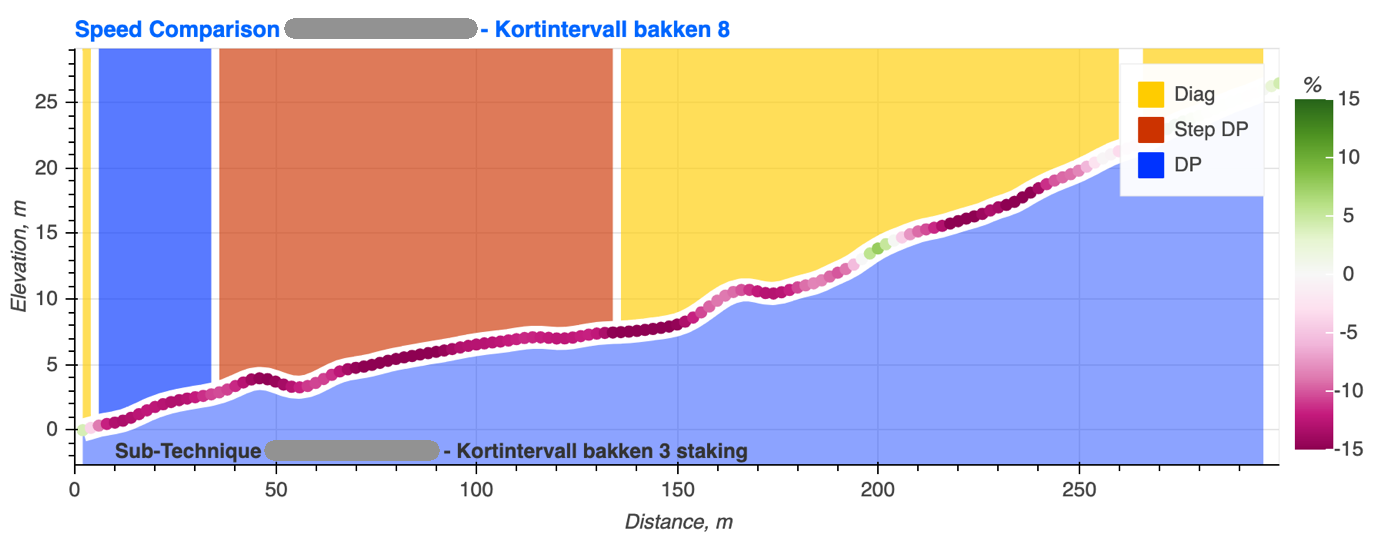
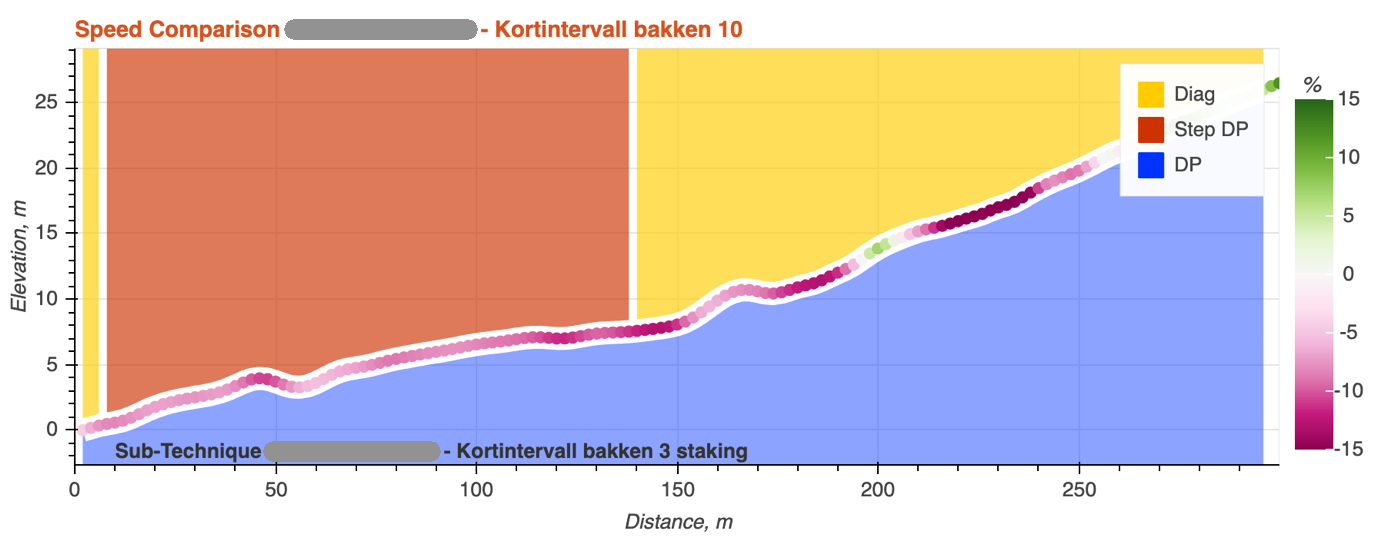
It can also be seen that in the steepest parts of the second halves of the intervals, the athlete could gain some time when using diagonal stride compared to double pole.
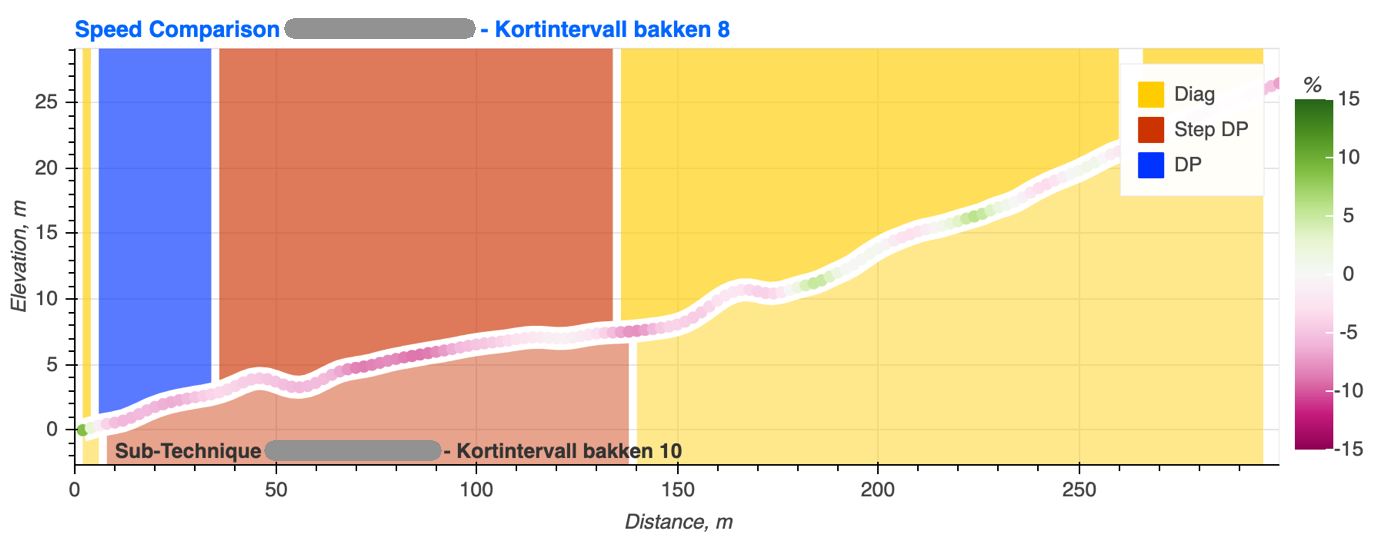
Comparing the two free sub-techniques intervals, we can now see that for the faster of the two intervals the athlete chose to use only step double poling and diagonal stride, whereas for the slower one he decided to add some double poling in the beginning. However, in this last interval he changed to diagonal stride a little earlier, what made him gain some time during the diagonal stride part.
Archinisis for daily training
This short training session example shows how you can learn something out of each and every training session.
Our system not only allows you to compare timings, but also to observe the development of time, speed and sub-technique within one session and between sessions. It is even possible to compare athletes with each other.
Moreover, if you use the sensor while skiing standardized tracks both in winter and summer, it gives you the opportunity to track performance over time.